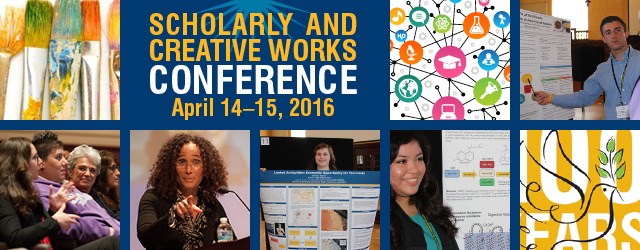
All Conference Presentations, Performances and Exhibits
Location
Guzman 112
Start Date
4-15-2016 3:00 PM
End Date
4-15-2016 3:15 PM
Student Type
Undergraduate
Faculty Mentor(s)
Sister Patricia Dougherty, O.P., Ph.D.
Presentation Format
Oral Presentation
Abstract/Description
The Irish Republican Brotherhood (I.R.B.) and the Irish Volunteer Force (I.V.F.) altered Irish Nationalist tactics from Parliamentary supported Home Rule to a republican movement for Irish Independence. The actions of these secret societies between the years of 1900 through 1917, before the Irish Revolutionary period,[1] are the reason that Ireland gained independence from United Kingdom in 1921. The change from political negotiations by the ineffective Irish Parliamentary Party to the republican movement would never have happened without the Easter Rising of 1916. The centennial anniversary of this Easter Rising makes The Power of a Secret: Ireland’s secret societies involvement in Irish Nationalism pertinent to all those interested in Irish History.
Historians, such as Tim Pat Coogan, Richard English, and Keiron Curtis examined the individual personalities (Michael Collins, P.S. O’Hegarty, and Patrick Pearse) of Irish Nationalism, but never involvement of the secret associations. This study of two main secret groups, I.R.B. and I.V.F., corrects this missing link of Irish Nationalism. There will be some brief mentioning of how these groups effected the Nationalism movement after the Easter Rising, however the primary focus will be leading up to and during the Easter Rising.
Sources used for research are the Irish National Library, videos interviewing I.R.B. and I.V.F. members published by Ireland Centennial, and books about the Easter Rising and Irish Nationalism. Secret societies are briefly mentioned in books about the Easter Rising, but they never attribute the Rising to the organization and planning done by these secret societies. The constitution of the I.R.B and I.V.F., as well as letters that were exchanged between members about the organization of their groups, was critical to the content of this paper. The I.R.B. was by definition a more secret society than the I.V.F., because the I.V.F. was open to all, while I.R.B. screened members and required them to take an oath to secrecy. The power of a secret was never more vital than with the planning of the rebellion.
The period in the 1910s and early 1920s when Irish nationalist opinion shifted from the Home Rule Movement – supporting the Irish Parliamentary Party to the republican Sinn Féin movement.
Included in
Celtic Studies Commons, Cultural History Commons, Diplomatic History Commons, European History Commons, Jurisdiction Commons, Military History Commons, Organization Development Commons, Political History Commons, Social History Commons
The Power of a Secret: Ireland’s Secret Societies Involvement in Irish Nationalism
Guzman 112
The Irish Republican Brotherhood (I.R.B.) and the Irish Volunteer Force (I.V.F.) altered Irish Nationalist tactics from Parliamentary supported Home Rule to a republican movement for Irish Independence. The actions of these secret societies between the years of 1900 through 1917, before the Irish Revolutionary period,[1] are the reason that Ireland gained independence from United Kingdom in 1921. The change from political negotiations by the ineffective Irish Parliamentary Party to the republican movement would never have happened without the Easter Rising of 1916. The centennial anniversary of this Easter Rising makes The Power of a Secret: Ireland’s secret societies involvement in Irish Nationalism pertinent to all those interested in Irish History.
Historians, such as Tim Pat Coogan, Richard English, and Keiron Curtis examined the individual personalities (Michael Collins, P.S. O’Hegarty, and Patrick Pearse) of Irish Nationalism, but never involvement of the secret associations. This study of two main secret groups, I.R.B. and I.V.F., corrects this missing link of Irish Nationalism. There will be some brief mentioning of how these groups effected the Nationalism movement after the Easter Rising, however the primary focus will be leading up to and during the Easter Rising.
Sources used for research are the Irish National Library, videos interviewing I.R.B. and I.V.F. members published by Ireland Centennial, and books about the Easter Rising and Irish Nationalism. Secret societies are briefly mentioned in books about the Easter Rising, but they never attribute the Rising to the organization and planning done by these secret societies. The constitution of the I.R.B and I.V.F., as well as letters that were exchanged between members about the organization of their groups, was critical to the content of this paper. The I.R.B. was by definition a more secret society than the I.V.F., because the I.V.F. was open to all, while I.R.B. screened members and required them to take an oath to secrecy. The power of a secret was never more vital than with the planning of the rebellion.
The period in the 1910s and early 1920s when Irish nationalist opinion shifted from the Home Rule Movement – supporting the Irish Parliamentary Party to the republican Sinn Féin movement.

